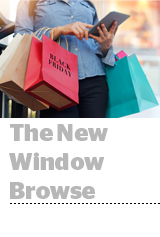 Thanksgiving holiday shopping trends have shifted from surprising to predictable. At this point, the big news will be in some hypothetical, future November when ecommerce sales stop growing hand over fist.
Thanksgiving holiday shopping trends have shifted from surprising to predictable. At this point, the big news will be in some hypothetical, future November when ecommerce sales stop growing hand over fist.
Ecommerce sales reached $18 billion combined for Thanksgiving, Black Friday and Cyber Monday, according to Adobe. Cyber Monday alone cleared about $8 billion, the biggest single-day online shopping numbers ever in the United States.
But the country’s consumer bonanza from Thanksgiving week through Cyber Monday is still the clearest distillation of retail marketing and consumer trends. And this year, smartphones are stealing the spotlight.
“It’s not such a surprise, but mobile is the big headline for the holiday,” said Rob Garf, Salesforce Commerce Cloud’s VP of industry strategy and insights.
Here are a few ways that the maturation of mobile commerce is upending shopping behavior and data-driven retail.
The buying window
In previous years, promotional deals were limited to Black Friday itself (remember people camping outside big box stores?) and to Cyber Monday.
“One of the really interesting things we saw this year was sales were pulled forward earlier in the week before Thanksgiving and sustained through the weekend,” said Taylor Schreiner, Adobe’s director of digital insights.
That’s partly because retailers want to clear out their merchandise before competition for consumer attention heats up and online ad inventory rates skyrocket over the long holiday weekend.
The online bedding retailer Brooklinen sent emails to its repeat customers offering exclusive pre-access to weekend sales prices, said Lynsey Thornton, Shopify’s VP of core product. Its goal was to reward loyalty and clear out stock before search, social and retargeting expenses shot up after Thanksgiving.
And by spreading sales over a week, retailers are “smoothing out the demand,” said Salesforce’s Garf.
Meeting two-day delivery guarantees, for instance, can be unmanageable if a brand does a meaningful chunk of its yearly sales in a matter of hours. Historically, retailers suffer when overloaded servers and tech infrastructure slow down or crash sites.
Check out that checkout
Mobile browsing and buying used to be clunky, Garf said. In years past, many customers abandoned their carts out of frustration and were then retargeted – an expensive tactic that further exasperated shoppers.
“Many retailers have cracked the code with optimizing the web experience for mobile,” he said. Sites and apps have become cleaner and quicker, but even more important are improvements in data-driven personalization, so shoppers see offers they’re likelier to want without having to swipe through products or load new pages, he said.
Mobile has also gone from show-rooming, a once-feared trend of people browsing brick-and-mortar stores while looking for cheaper options on their phone, to being an important, if not the most important, sales channel.
On Black Friday, mobile devices accounted for 63% of all Shopify ecommerce sales, extending mobile’s lead over desktop.
Shopify tends to have a higher share of mobile than other ecommerce tech providers like Adobe or Salesforce because Shopify’s customer base is primarily digital-first merchants, but Garf said Salesforce also saw mobile tip the scales for the first time at 54% of all Thanksgiving ecommerce.
And Adobe registered a jump in mobile’s share of the pie from 25% in 2017 to 34% this year, surpassing $6 billion.
Online retailers are also surfing the consumer adoption of frictionless mobile wallets, which make checkout a “quick and painless experience,” Thornton said.
Apple Pay, Android Pay and PayPal, which also owns Venmo, each have an incremental share of US shoppers, but by integrating with them all brands and retailers now have a scaled pool of consumers who can make purchases with a couple clicks.
“It’s the wild west for these mobile wallet providers to be the de facto standard, but there’s no clear winner yet,” Garf said.
Social ladders
Social media isn’t a big direct sales channel. Adobe said social drove a meager 1.1% of ecommerce in the past week.
But social media platforms have emerged as a way to reach new potential customers and to move people along in the consideration set even if they aren’t direct sales channels.
“Consumers are relying on social for inspiration and explicitly to research and discover products,” Garf said. Salesforce data showed social up 40% year-over-year for product traffic and consideration, making those platforms, especially Facebook and Instagram, which accounted for 94% of social traffic over the week, important stepping stones for retailers trying to shift customers from searching or browsing to actually buying.
This post was syndicated from Ad Exchanger.


More Stories
Go Media becomes Toitū net carbonzero certified
Under the Hood of Tesla’s Fleeting Foray Into Advertising
The Fin Tech Ad Tech Boom; Temu Tops Meta’s Charts (But At What Cost?)